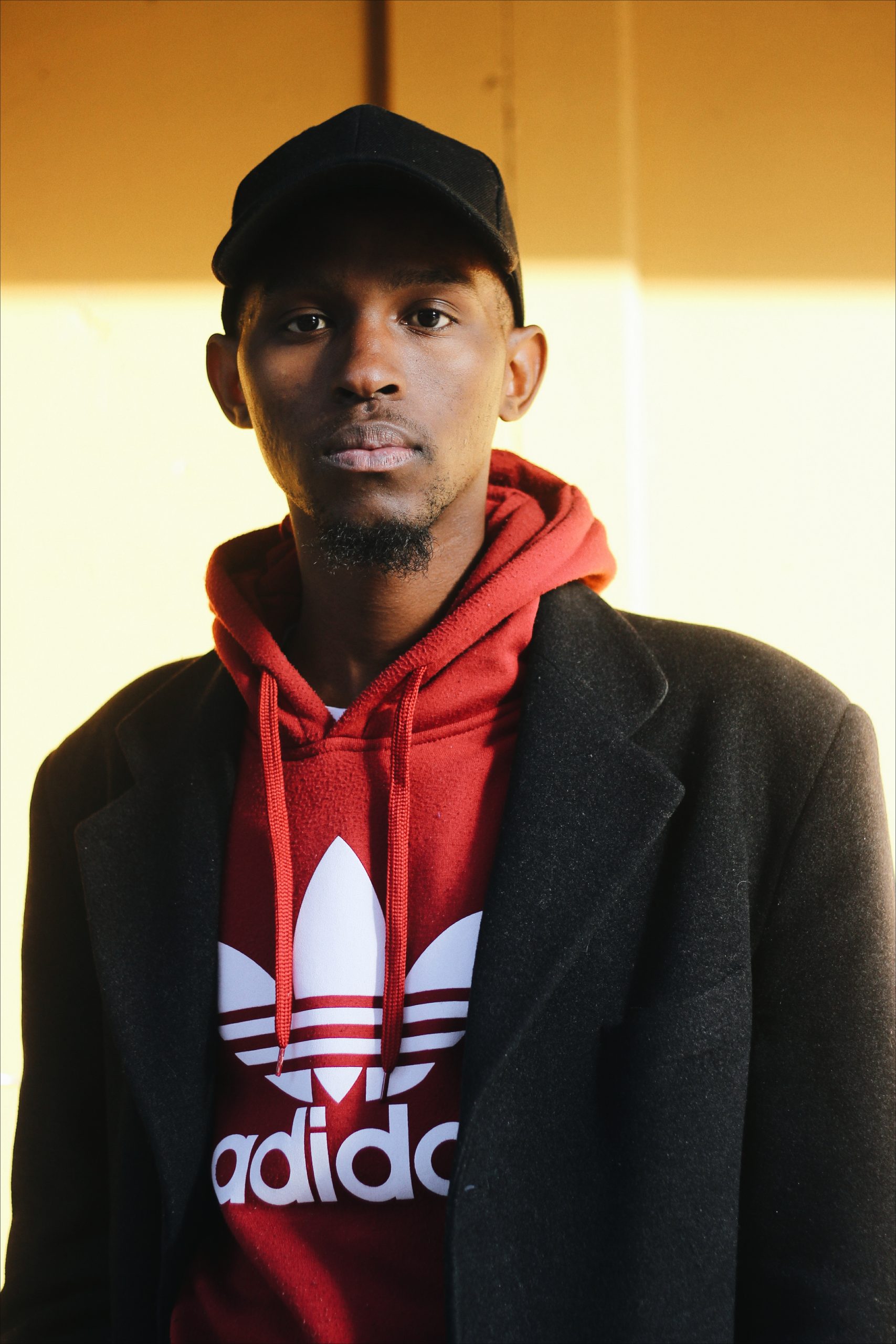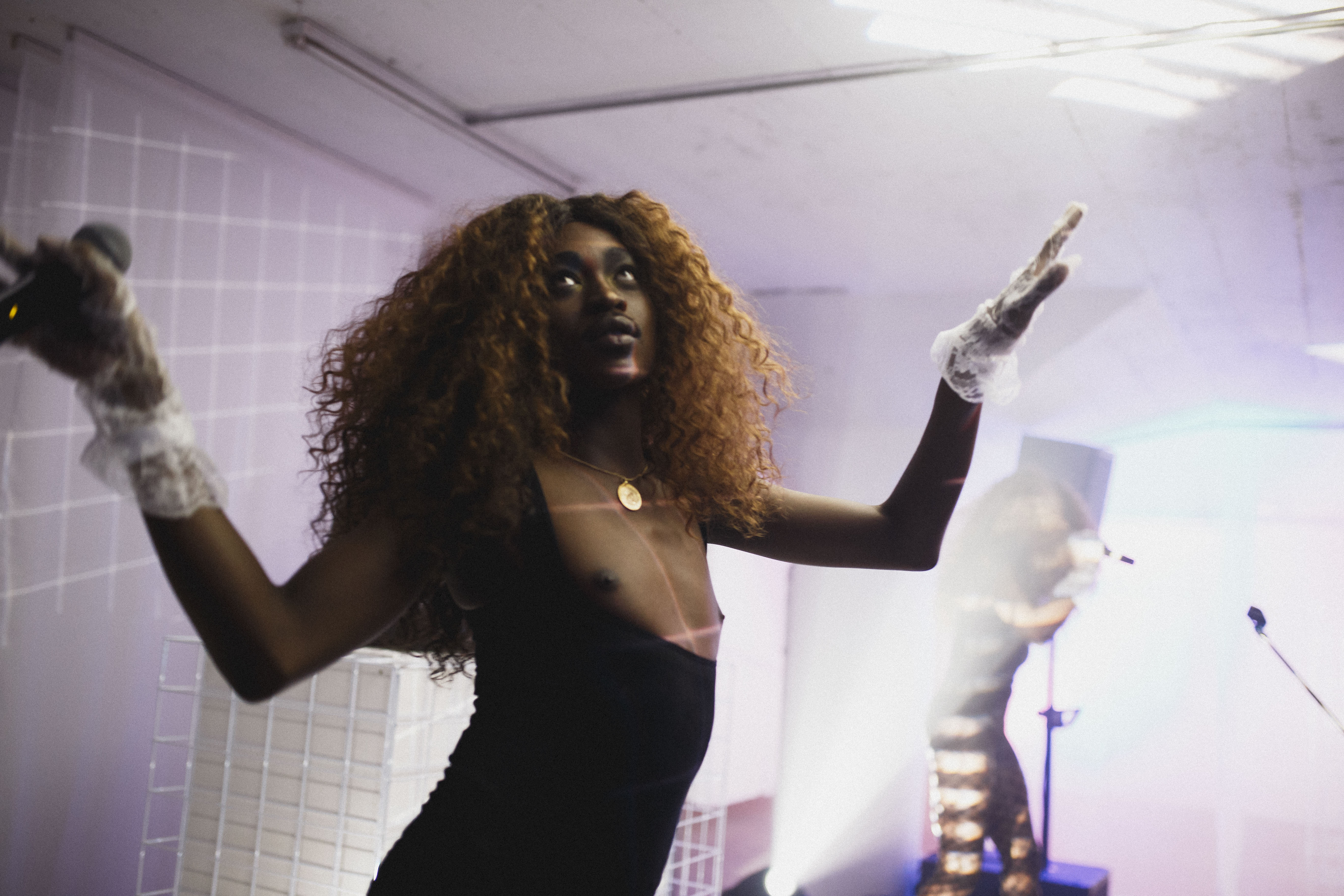For the queer, the trans, the non-conforming, the female and the black,
For those who have been alienated by mainstream culture,
For those who are constantly harassed by patriarchy and suffer at the hands of capitalism,
For copper-coloured Afro wigs, golden chokers, torn stockings and moving freely despite Lorraine’s side-eye,
there is FAKA.

Buyani Duma and Thato Ramaisa accomplish their pursuit to infiltrate spaces through the expression, reimagination and liberation of queer bodies as Desire Marea and Fela Gucci, collectively known as FAKA. The isiZulu word faka, which means to penetrate, seductively nuances how Desire and Fela validate new vocabularies of communication about black queer identities through their performance art, music, photography and videos.
FAKA formally established themselves in 2015. It started with a Facebook friend request and since then Desire and Fela have had reason to thank the internet for their divine connection. Like them, we also have various online platforms to thank for the front row seat we have to the becoming of a duo that has been representing and creating a sense of community. Their virtual following is extensive. From their #Siyakaka hashtag that caught like wildfire to their Instagram pages that beautifully showcase their breathtaking black queer bodies doing the most.

It is also online that we are able to listen to FAKA’s ancestral gqom gospel sounds from their EP Bottom’s Revenge or watch videos like From a Distance and Isifundo Sokuqala. But it is the duo’s titillating performance art which physically summons FAKA.
However, the reception of their performance art has been a “weird experience” for both of them. According to Fela, it seems as if society and even creative communities that appear to be open to experimental performance, art or music are in fact not. Both Desire and Fela laughed about how people walk out of their shows. But the frustration was felt when Fela said, “We want our art to exist outside, beyond gallery spaces. Beyond our circles and it is very difficult to manifest that because people are just not open.”
Desire added, “I think that is a very pertinent issue and something that also affects us as black queer artists. Many times people don’t want, or they fear engaging with our work because of what it might do or say about them or they just don’t understand it or they’re just not comfortable with assigning that much power to a black queer person who is not supposed to have that much power in our society, and a power that they created for themselves.”

The contrast between FAKA’s reception in the virtual world and in reality is evident and it is highly plausible that the internet’s humanising virtue of representation is responsible.
“I think the online experience is different because there is a sense of community online with people who follow each other and stuff. As opposed to physical spaces, not everyone is familiar with the work so not everyone has been following what you have been doing so I guess it can come as a shock to some people,” said Fela.
FAKA imagine a future in which they own a creative agency that elevates black, queer and trans people. In the meantime, they want to create safe spaces that allow black, queer, gender non-conforming or trans people to reflect on their experiences growing up. FAKA want to continue creating spaces where mourning can take place in order for healing and liberation to follow.

“I think in many spaces people always champion the fight, this radical reaction to that kind of upbringing or that kind of childhood and stuff, and I do not think that is something that we champion. I mean, YES, it is great, we all have different ways of fighting but we also feel like we should be creating spaces for ourselves to be like, ‘Yo, I am really affected by a lot of things about how I grew up and what it means for me to be me.’ My experience of family is also very different and it is quite a complicated thing because you exist in a world where everyone is like, ‘Oh, you’ve been home, home must have been so great. I mean home is home, you must be so refreshed’, but I think in our circle we understand that home usually isn’t like that. Home is a lot of policing…it is very violent. Not even from people doing anything. Just the space and what it represents for you and what it has always represented is quite a harsh thing. And I think we have created spaces for us to just be, to feel openly,” said Desire
Subsequently, Desire and Fela have built spiritual homes in each other. Together, FAKA also represents a home for all those that relate to or revere their expression.


Shoot Credits
Photography by Viviane Sassen
Styling by Jamal Nxedlana
Hair & Makeup by Orli Meiri
Assistant Stylist Chloe Hugo-Hamman
Cover Image: Fela Gucci & Desire Marea in Africa/China Bags, Printed headscarf, Ruffle socks all stylists own. Shoes are models own
Look 1: Fela Gucci & Desire Marea in Cobalt Shirtdress and Embroided jeans by Topshop, Pink ties stylist own, Shoes and accessories are models own.
Look 2: Fela Gucci in Check trousers by H&M, Ibheshu, Ruffle socks, body chain and earrings stylist own, Shoes and accessories are models own.
Look 3: Desire Marea in Check blazer by H&M, Ibheshu, Ruffle socks, Cowboy hat and earrings stylist own, Shoes and accessories are models own.
Look 4: Fela Gucci & Desire Marea in Mesh bomber by H&M, Fishnet stockings and Ruffle socks stylist own, Shoes and accessories are models own.
Look 5: Fela Gucci in check trousers by H&M, Cardigan, Zebra vest, Cowboy hat and Ruffle socks stylist own, Shoes and accessories are models own.
Look 6: Desire Marea in check trousers by H&M, Waistcoat, Cowboy hat and Ruffle socks stylist own, Shoes and accessories are models own.
















 Tube Station
Tube Station Manthe Ribane
Manthe Ribane DancerII
DancerII
 Sky H1
Sky H1 Bill Kouligas
Bill Kouligas
